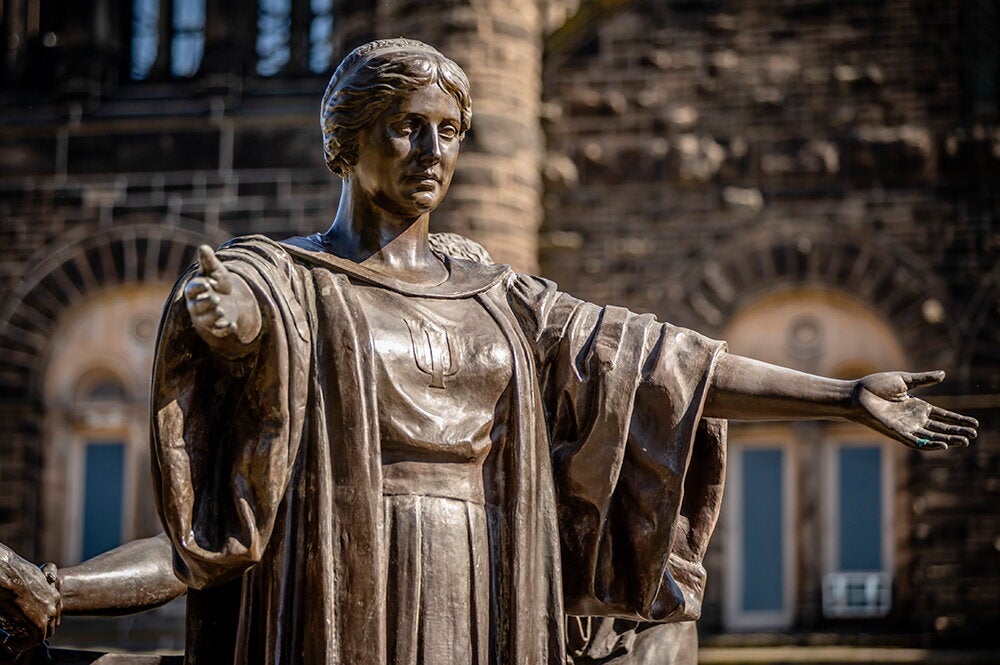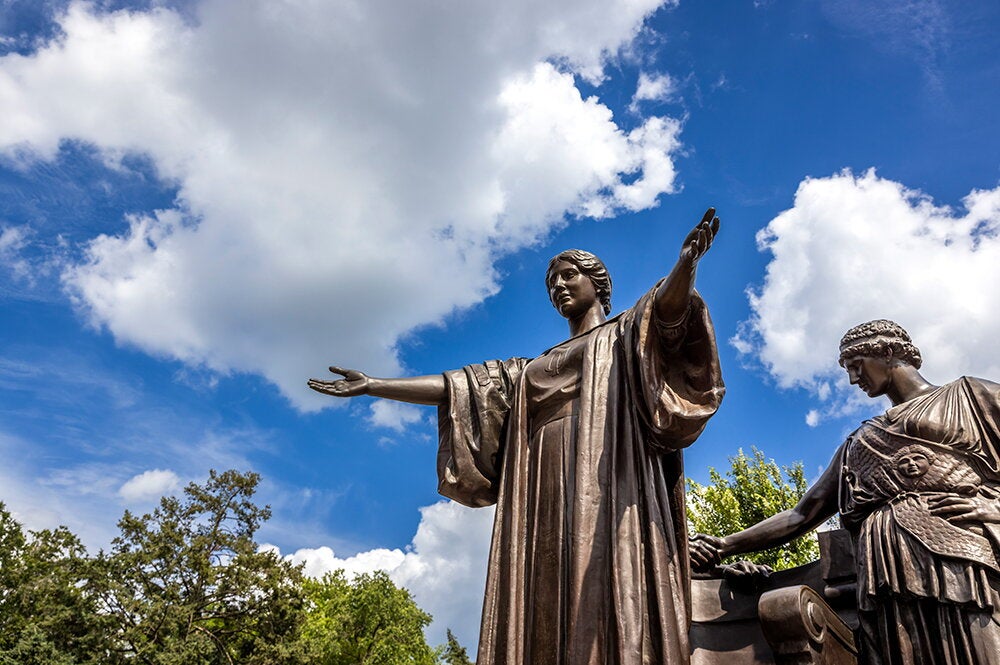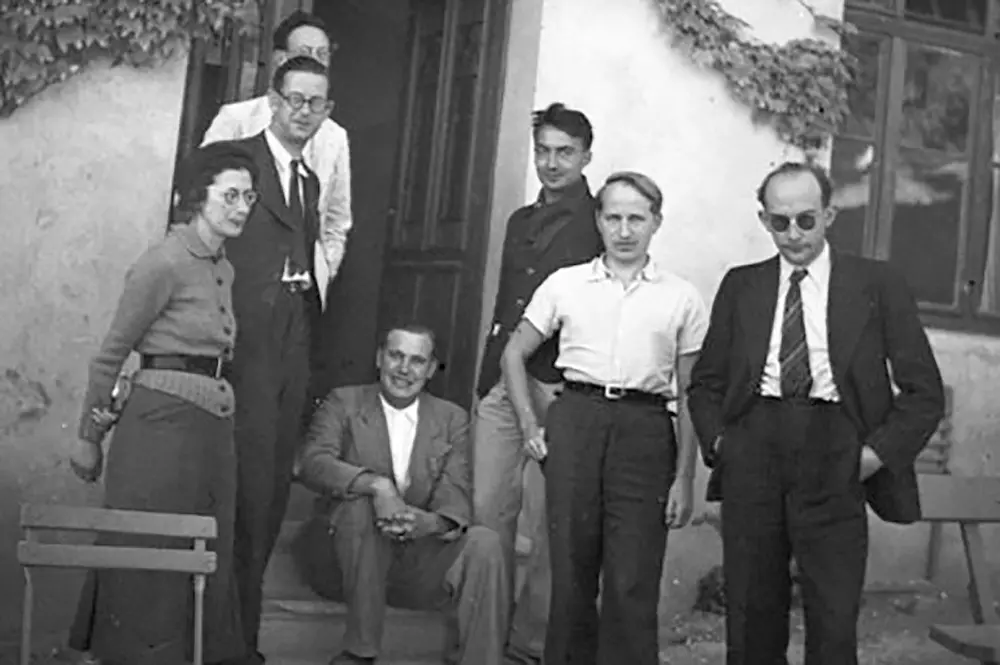
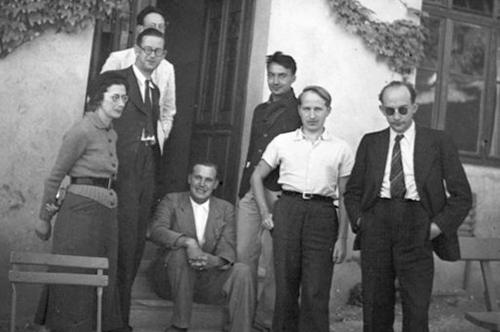
Recently, architects who are mapping the many nooks and crannies of Altgeld Hall in advance of the building’s renovation were asked this: Does there exist, in a forgotten room off the elevator shaft, the remains of an office for someone named N. Bourbaki?
If you hear laughing, that might be retired faculty, staff, or alumni who roamed Altgeld Hall sometime between the 1950s and 1970s. It was during that time you could actually see an “office” for N. Bourbaki, a fictitious French mathematician, on an odd platform in the building’s interior. The only way you could see the roughly five-foot square space was through the bars of the cage elevator as you passed between the second and third floors.
When it mysteriously appeared in 1955, the office was equipped with a rickety table, chair, quill pen, candle, an empty Chianti bottle, and a sign reading, “Dr. Bourbaki,” according to the Spring 1992 Math Times. Other accounts mentioned an overcoat, umbrella, shoes, and books, including Elements of Calculus, a French textbook first published in 1939.
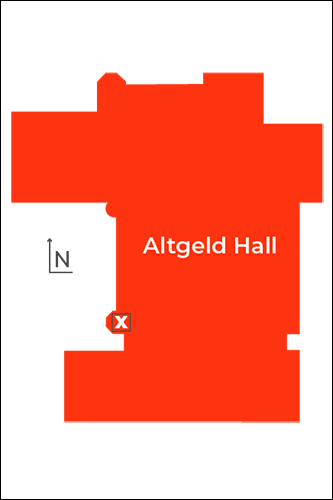
The fake office was located in a recess created during one of the building’s expansions. A new wall had isolated the perch from the rest of the building, and the only way to observe it—and, apparently, decorate it—was by taking the elevator.
The Daily Illini caught wind of the quirky office and published a story. The university, citing fire safety, quickly removed Bourbaki’s office, but it couldn’t stop the jokes. One of the first was a photo by the Daily Illini, taken soon after the initial story, portraying a student dressed as the “renowned” professor N. Bourbaki getting evicted from the building. For several days in the newspaper’s classified section, an advertisement read, “NEED IMMEDIATE housing; being evicted. See N. Bourbaki, third floor Mathematics Building.”
Even after the university took action to vacate the office, it didn’t fully disappear. Within months, a door with a sign reading “N. Bourbaki” appeared on a door in the space. It stayed there for years. Professor emeritus Paul Weichsel saw the door in the early 1960s, and others reported seeing it as late as the 1970s.
“If my memory serves, it was an actual door, possibly affixed to the shaft,” he said, in an email. “As you know, in those days, (no one) carried the phone-camera-video device in their pocket that is now practically universal. Had that been the case then, I am sure that there would be a plethora of photos documenting that ‘office.’”
Eventually the cage elevator was replaced with an enclosed elevator, and Bourbaki’s tenure in Altgeld Hall became just a memory. It has been a persistent memory, however; Sheldon Katz, professor of mathematics and former department head, still hears from alumni and retired faculty about Bourbaki’s office, particularly now as the renovation draws near.

So who was Bourbaki? While he was a fictitious mathematician, Bourbaki was a real person. Charles-Denis Sauter Bourbaki was an otherwise successful 19th century French general, but he was infamous in France for his defeat in the Franco-Prussian War. After World War I, a group of French mathematicians who believed that the subject should be taught differently began publishing textbooks collectively under the pseudonym Nicolas Bourbaki. One of the later members of the group, Roger Godement, served as the George A. Miller visiting professor of mathematics at U of I in 1954.
That N. Bourbaki wasn’t a real person became an inside joke among mathematicians around the world, which inspired a group of Illinois students to set up his office in Altgeld in 1955. According to the Spring 1992 Math Times, the space they claimed for Bourbaki’s office had been filled with litter before the students converted it into perhaps the longest-lasting prank in the building’s history.
Does the door bearing Bourbaki’s name still exist in the bowels of Altgeld? Alas, Katz reports that the door is gone—but not from memory. John Day (BS, ’70; MS, ’76, electrical engineering), who spent many hours in Altgeld as a member of the Illiac IV supercomputer project, credits the resonance of N. Bourbaki’s office to both it being an inside joke for mathematicians and its vivid setting.
“We know ‘he’ doesn’t exist as a mathematician. Combine that with the strange floor plan of Altgeld, and it created just enough mystery one could believe that there were strange and unknown corridors in the building,” Day said. “So the idea that Bourbaki’s office was in the elevator shaft with an old rickety open cage elevator—probably the only one in CU—just added to both the mystery and the intrigue. And it was a wonderful in-joke.”
